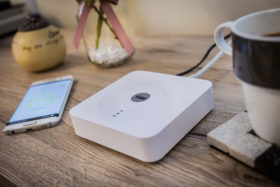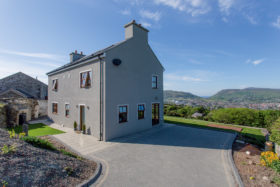
Use code BUILD for 20% off our next online training course
Book here!
Use code BUILD for 20% off our next online training course
Book here!Glazed doors are a sought-after feature in our homes, with sliders and bifolds featuring in many self-build and extension projects. But deciding which style is most suitable for your house will come down to the way you’ll be interacting with the doors and how you’d like them to perform.
Here are the key things to consider:
These doors are formed of connected leafs, each one up to 1.2m wide. Panels are hinged together and run across on a single track. The setup will open out in a concertina effect, stacking at one or both ends of the opening.
While there is no limit on the number of panels included within a bifold setup, these systems are often installed in smaller openings. Because they stack back-to back, the glazed span can open 90% of an aperture up to the outdoors.
This means that if you’re looking to install doors in a space smaller than 3m, a folding system will create a larger gap than sliders can achieve. You can even have a single access door as part of the setup – convenient for creating an entrance without opening up the entire aperture.
Source it: Find the right IDSystems glazing products for your project
Bifold frames are available in a range of materials. Aluminium is a popular choice because of its hardwearing nature and innate strength. Timber units are perfect for more traditional looking properties and offer the innate character of this natural material from both sides.
For homeowners wanting something in-between, composite doors offer the best of both worlds – a maintenance-free aluminium door with the look of natural timber inside.
Running on twin or triple tracks, these glazed door panels are staggered to slide and overlap. Because of this, individual leafs can be larger than bifolds – generally up to 3m wide. But bear in mind that larger panels will come with bigger costs.
Although increasingly popular for a range of aperture sizes, sliders tend to be used in larger gaps. It’s possible to create glazed spans of up to 24m wide.
The maximum opening between inside and out will be around 66%-75%. This is because the sliding format means a fixed frame panel will take up some space, even if it moves from side to side.
An alternative is to have a pocket door setup, where the panels slide on an extended track into the wall – but you’ll need an adjacent solid wall, which might be better used as a glazed area.
With bigger openings you probably don’t need the whole width exposed to the outside anyway. Plus, the large panes of glass and reduced frames in sliding setups mean narrower sight lines, further aided by having panels locking behind each other.
The materials choice for sliding doors is often based on what can achieve slimmer sightlines, so aluminium is by far the most popular frame option.
If you are looking to purchase units with particularly thin surrounds, make sure you understand how well they slide and operate before buying; the slimmer the doors are, the smaller the running gear can be, and as such the heavier they may seem when opening and closing.
The key is to try the doors out for yourself before buying to get a feel for the system and how well it works.
Edward Stobart is head of projects for IDSystems and a passionate self-builder. He recently renovated a 1960s bungalow and has worked closely with thousands of people creating bespoke homes over the last 12 years.
Top image: Sliding doors from IDSystems are a key feature of this extension

